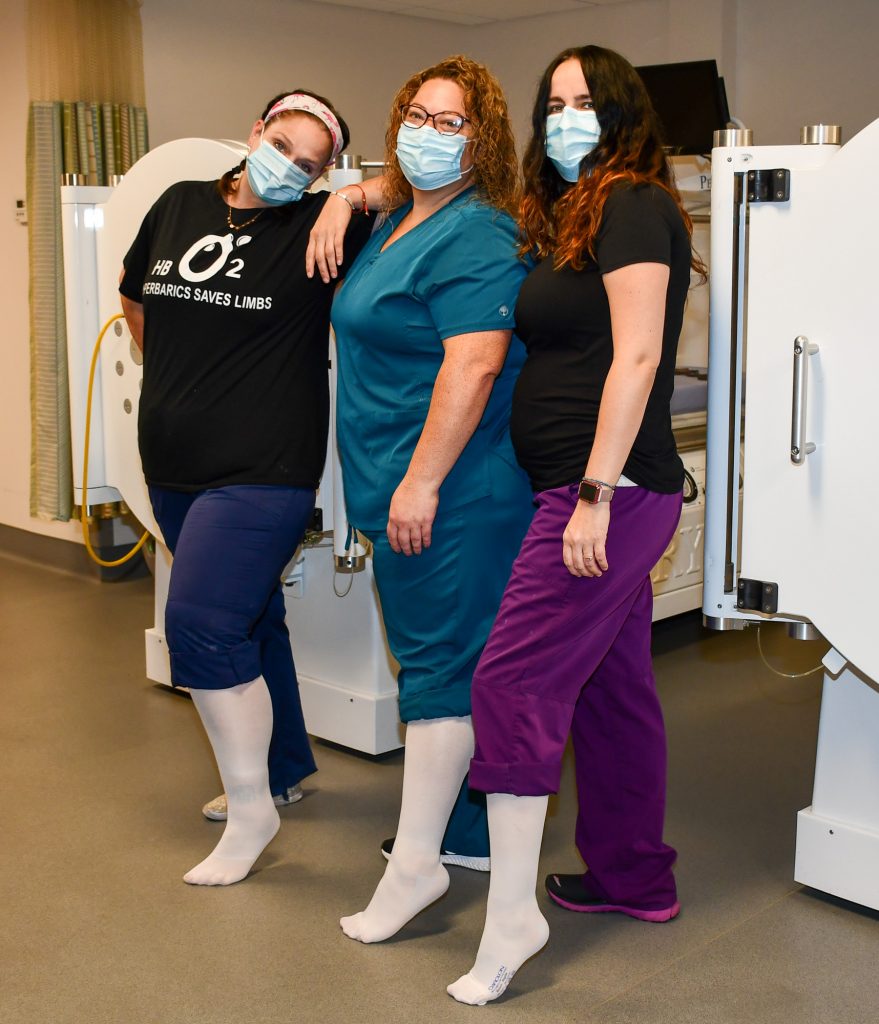Get a “Leg Up” on Vascular Health during September – Peripheral Artery Disease Month
Many people are aware that if your arteries in the heart and neck get blocked you could suffer a heart attack or stroke. The same principles hold true for the arteries in the legs. Peripheral artery disease, or PAD, is when arteries in the legs get blocked, and blood flow to the legs is impaired.

And that’s why in September – during PAD Awareness Month – Deborah urges everyone to get a “leg up” on vascular health and get a check-up.
PAD affects approximately 17 million Americans. This common and potentially serious vascular disease occurs when arteries in the legs become clogged with fatty cholesterol deposits, reducing blood flow to the legs.
Many people with PAD have typical symptoms including leg muscle pain and cramping when walking. However, typical symptoms occur in only about one-third of patients with PAD. One-third will have atypical symptoms such as heaviness or easy fatigability. Finally, a third of patients – particularly diabetics – will have no symptoms at all. In addition to amputation, patients with PAD are also at much higher risk of heart attack, stroke, and death, as opposed to those without PAD.
“Recent studies continue to show that PAD, although very prevalent, is still very widely overlooked and undertreated by clinicians,” said Richard Kovach, MD, Chair, Interventional Cardiology at Deborah Heart and Lung Center. “Physicians recognize the classic PAD symptoms, but the atypical symptoms are often missed or not understood, which leads to undetected disease and lack of appropriate treatment.”
Dr. Kovach added: “Undetected PAD can progress to complete obstruction of blood flow and be devastating, including the development of skin ulcers, gangrene, and even amputation.”
To focus attention on PAD, Deborah’s team in the James Klinghoffer Center for Wound Healing and Hyperbaric Treatment, who care for many patients with PAD including open sores and slow healing wounds, and use therapies to speed healing post-amputation, donned white socks in support of the national #whitesockcampaign to focus attention on PAD.
“The team is looking to draw attention to the lower legs where the effects of undiagnosed PAD can be really hard,” said Dr. Kovach. “The good news, however, is if diagnosed early, PAD can be treated with lifestyle changes, medication, and many types of non-surgical procedures. Early diagnosis and proper treatment are key to living well with PAD.
Are You at Risk?
Deborah Heart and Lung Center urges anyone who is at risk to call their physician for a check-up or PAD screening.
Risks include:
- Smoking, both present and former smokers
- Diabetes
- High blood pressure
- Abnormal cholesterol levels
- African-American ethnicity
- Previous heart disease, heart attack, stroke or family history
- Over 50 years old
What Does a Screening Involve?
Screening for PAD includes a test called the ankle-brachial index, a painless, noninvasive test that compares the blood pressure in the ankles with the blood pressure in the arms, and can indicate if you have PAD. If needed, additional noninvasive testing might be performed.
“It is vitally important for those at risk to get screened for PAD. Deborah is fully committed to increasing awareness of PAD and improving our community’s vascular health.”
“Since September is PAD Awareness Month, this is a great time to make a screening appointment.”